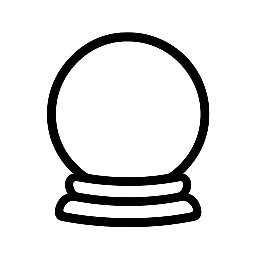The Mysterious World of Tarot: Unlocking its Secrets and Symbolism
For centuries, tarot cards have been a source of fascination and intrigue, offering a glimpse into the mysteries of the universe and the human experience. With its rich history, complex symbolism, and multifaceted interpretations, tarot has become a popular tool for self-discovery, personal growth, and spiritual exploration. In this article, we’ll delve into the world of tarot, exploring its origins, principles, and practices, as well as its various uses and applications.
A Brief History of Tarot
The origins of tarot are shrouded in mystery, with various theories and legends surrounding its creation. The earliest recorded use of tarot cards dates back to 15th-century Italy, where they were used as a game called Tarocchi. Over time, tarot evolved and spread throughout Europe, with different regions developing their own unique decks and interpretations.
In the late 18th century, French occultists, such as Antoine Court de Gébelin and Éliphas Lévi, popularized tarot as a tool for divination and spiritual growth. Their work laid the foundation for modern tarot, which has since become a global phenomenon, with countless decks, books, and online resources available.
The Structure of a Tarot Deck
A standard tarot deck consists of 78 cards, divided into two main categories: the Major Arcana and the Minor Arcana. The Major Arcana, comprising 22 cards, represents major life themes, archetypes, and transitions, such as the Fool, the Magician, and the Death card. These cards are meant to convey deeper, more complex messages and are often seen as indicators of major life events or spiritual awakenings.
The Minor Arcana, with 56 cards, is divided into four suits, similar to a regular playing card deck: Wands, Cups, Swords, and Pentacles. Each suit represents a different aspect of life, such as creativity (Wands), emotions (Cups), thoughts (Swords), and material possessions (Pentacles). The Minor Arcana cards are used to provide more detailed, everyday guidance and insights.
Tarot Principles and Practices
Tarot is based on several key principles, including:
- Synchronicity: The idea that the universe is interconnected, and that tarot cards can reflect the querent’s current situation and energies.
- Symbolism: The use of symbols, imagery, and metaphors to convey complex messages and themes.
- Intuition: The practice of trusting one’s instincts and inner wisdom to interpret tarot cards.
- Correspondence: The concept that tarot cards can be linked to various systems, such as astrology, numerology, and alchemy, to deepen their meaning and significance.
To work with tarot, one can use various techniques, including:
- Spreads: Laying out cards in a specific pattern to gain insight into a particular question or situation.
- Drawings: Randomly selecting cards to receive a message or guidance.
- Meditation: Using tarot cards as a focal point for meditation and introspection.
- Journaling: Recording tarot readings and reflections to track progress and identify patterns.
Tarot Applications and Benefits
Tarot has a wide range of applications, from personal growth and self-discovery to career guidance and relationships. Some of the benefits of working with tarot include:
- Increased self-awareness: Tarot helps individuals gain a deeper understanding of their thoughts, emotions, and behaviors.
- Improved decision-making: Tarot can provide guidance and insights to inform life choices and decisions.
- Stress relief: Tarot can offer a calming and meditative experience, reducing anxiety and promoting relaxation.
- Creative inspiration: Tarot can spark imagination and creativity, inspiring new ideas and perspectives.
Conclusion
Tarot is a complex, multifaceted system that offers a unique perspective on the human experience. Whether used for personal growth, spiritual exploration, or simply as a tool for creative inspiration, tarot has the power to transform and enlighten. By embracing the principles and practices of tarot, individuals can tap into its symbolic language, unlocking new insights and understanding of themselves and the world around them. As we continue to explore the mysteries of tarot, we may discover that its secrets and symbolism hold the key to a deeper, more meaningful connection with ourselves and the universe.


Leave a Reply